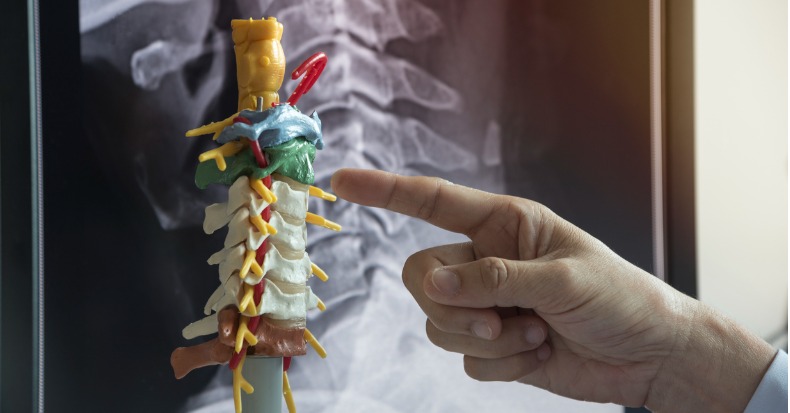To better understand whiplash, let’s take a look at the anatomy of the cervical area and what is actually injured in a whiplash injury. The spine is basically a long chain made up of blocks that are larger at the bottom and smaller at the top. This means the low back vertebra are huge compared to the neck vertebrae. The vertebrae fit together in a way that “locks” them together by the small joints in the back called “facets” and in the front by the disks. These joints function as shock absorbers between the blocks or “vertebral bodies.” Also in the front, there is a tough piece of tissue called the “anterior longitudinal ligament” that provides a barrier so that when the neck is bent backwards (into “extension”), it becomes tight and stops that movement so it doesn’t over-extend, which could fracture the small facet joints in the back.
There are ligaments, or tissues that hold bone to bone, in the back of the spine that connect between the “spinous processes” or the bony “bumps” in the middle of the back. These ligaments check or stop excessive forward motion of the neck during whiplash. Joint capsules surround the joints, which we all have seen when we separate a chicken leg from the thigh. Remember how smooth and shiny the end of the chicken leg is? That smooth surface at the end of long bones is call “hyaline cartilage”, and it allows for slippery gliding between the ends of our bones when we move any joint, including our fingers, wrists, shoulders, hip as well as the facet joints of the spine. Joint movement is facilitated by the presence of an oily substance called “synovial fluid” which acts like a lubricant for the joint allowing for pain-free movement.
A “sprain” occurs when we damage a joint capsule or a ligament, or when the muscle or its attachment (tendon) is injured. These are graded as mild, moderate, or severe, or grades 1, 2,or 3, with grade 3 being the worst at 75% or greater tearing, and healing takes progressively longer with each grade.
During a whiplash injury, the classic rear-end collision results in over stretching of the ligaments in the neck, and tearing can occur (sprain, grades 1, 2, or 3). If one of the nerves gets pinched, then numbness, pain, and/or weakness can occur, radiating down the arm to a specific location. When this occurs, the long-term prognosis is worse. Concussion can also occur if the brain is slammed against the inside of the skull. Chiropractic adjustments, when administered early, yield the best results for treating whiplash, according to many studies.
